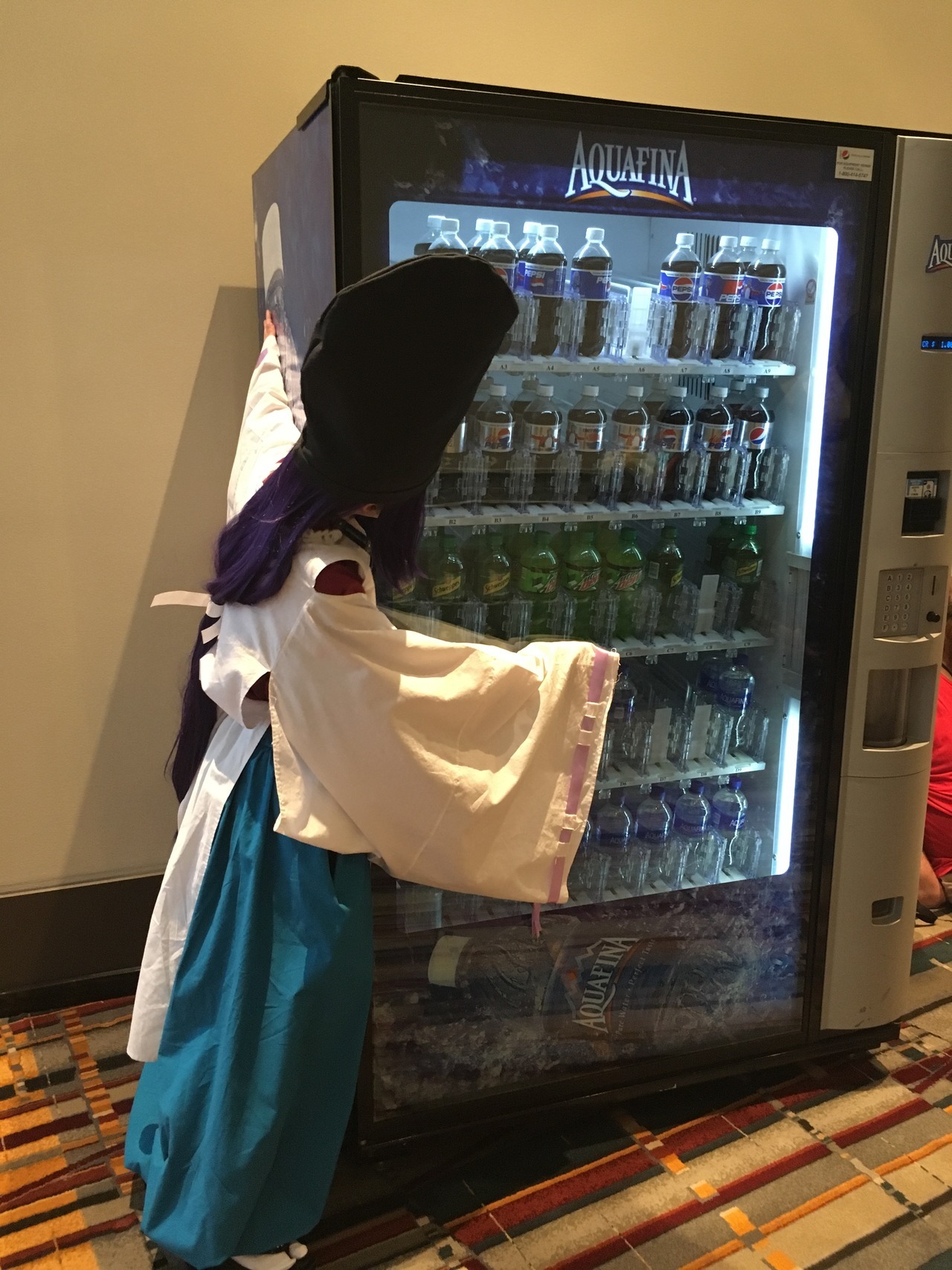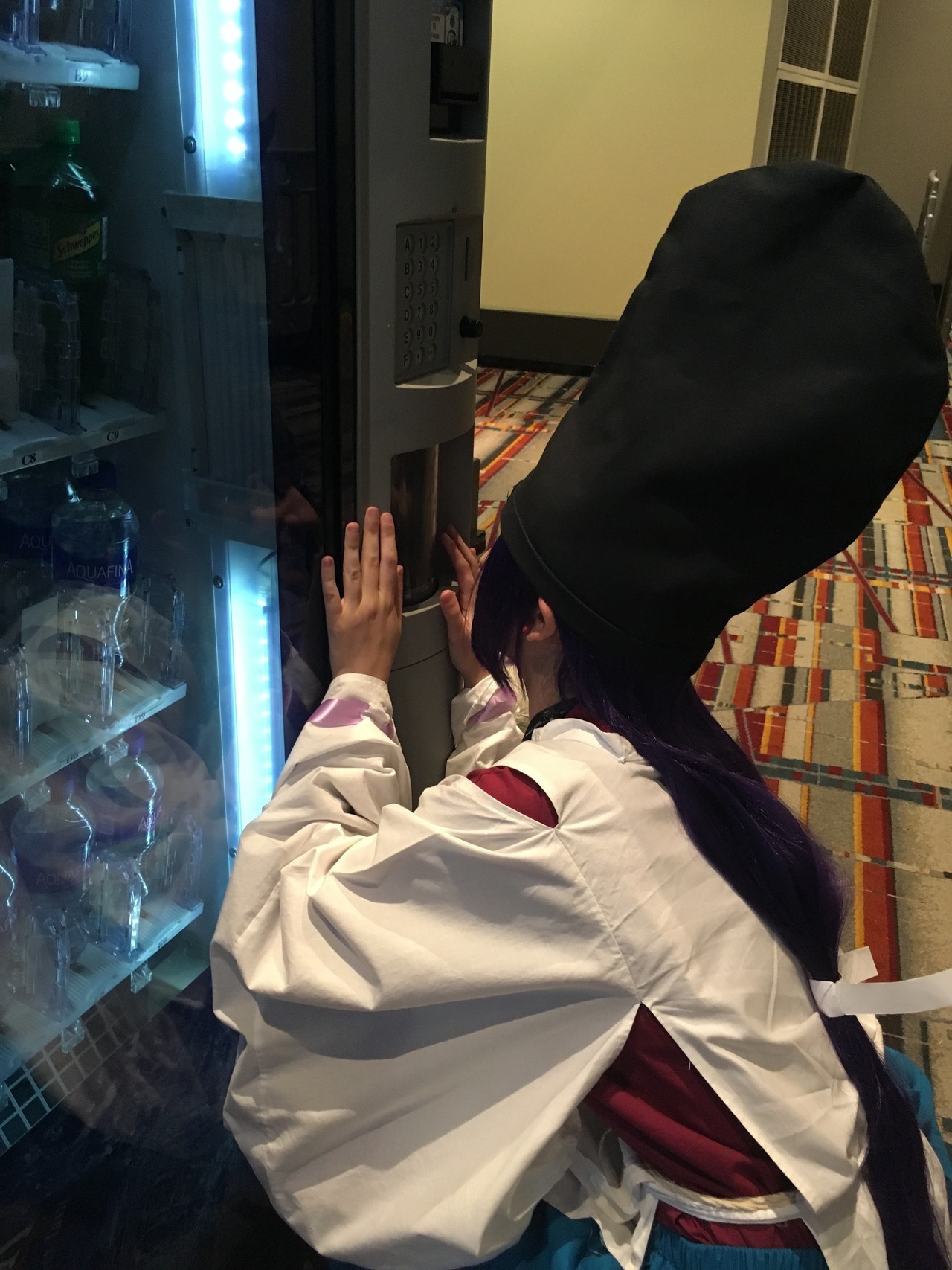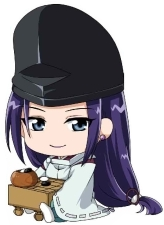Hikaru no Go - Chapter Recaps & Analysis
On this page I'll be going over the manga chapter by chapter, providing a detailed summary of each one, interesting bits of trivia, and my own thoughts on the way the story all ties together. I hope this will be a helpful reference for fanfiction authors or anyone tryung to look up specific details of the story, and I hope it will also provide some interesting insight for a deeper look at the series. Enjoy! :)
Two quick notes: 1. I'm using the official Viz translation of the manga, so all chapter titles, dialogue quotes, etc. will come from there unless otherwise noted. 2. For ease of reading and spoiler protection, I've contained each chapter in its own collapsible section of the page. Click the title of each chapter to open up their contents. Click again to close.
Spoiler alert! This is a holistic style of review, taking into account not only the contents of each chapter on their own, but how they play into the overall story. As such, chapter commentary may include spoilers for later chapters. Proceed with caution!
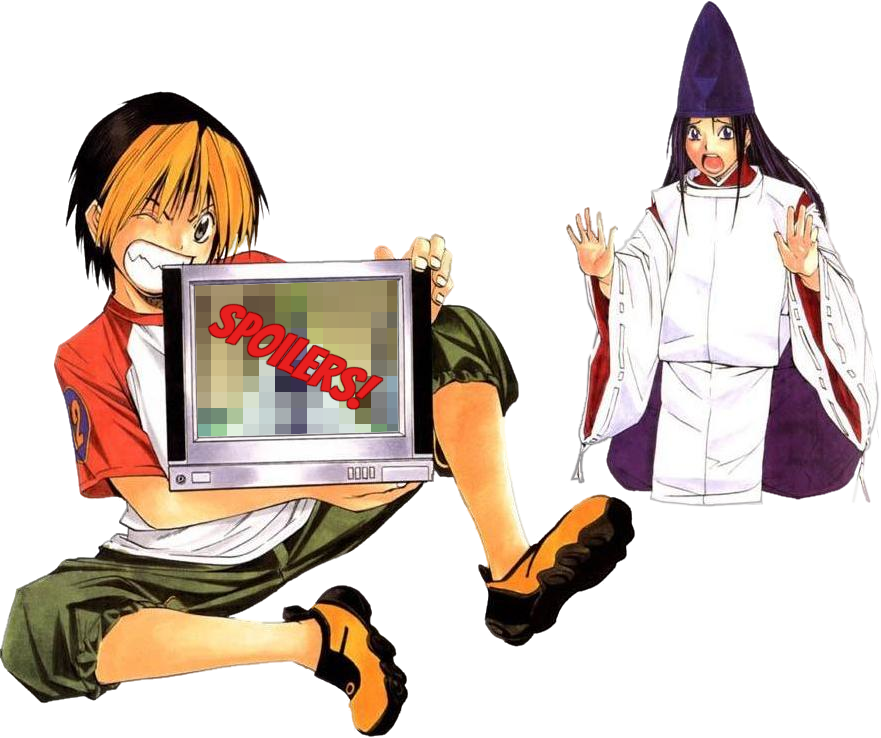
Chapter 1: Descent of the Go Master
Recap
Hikaru is rummaging through his grandpa’s storage, accompanied by Akari. Hikaru, in a spectacular display of being 11 years old, is looking for something valuable to sell, because his parents cut off his allowance after he only scored 8 points on his social studies test. Hikaru finds an old go board (which he recognizes the purpose of, while Akari doesn’t), and decides he’s going to sell it, but is frustrated because he can’t seem to remove what looks to be an old blood stain. Akari says she doesn’t see anything, Hikaru argues about it, and… Who should appear but the most special most awesomest guy in the whole wide world! That’s right, after realizing that Hikaru can see the blood stain and hear his voice, Sai manifests in a dazzling show of confetti and silk. Akari is freaked out by Hikaru talking to no one, and when he passes out after meeting Sai, she calls grandpa for help.
The next day, class 6-1 at an unnamed elementary school gets a surprise social studies test, since apparently they did horrible on the last one. Hikaru feels unwell after the previous day’s events, but Sai notices Hikaru’s test has history questions on it; Hikaru yells at Sai out loud, disrupting the class, and Akari tells the teacher that Hikaru passed out yesterday and still isn’t feeling well. For some reason the other kids think this is cool. Hikaru tells Sai not to talk unless Hikaru talks to him first, although Sai says he was only trying to help. Nonetheless, Hikaru asks Sai his name and what his deal is.
Here, we learn Sai’s story: During the Heian period, he served as one of two go tutors to the Emperor. He had a great time playing go every day, but the other tutor decided there should only be one, and suggested to the Emperor that he and Sai have a game to decide who gets to keep their job. The Emperor agreed, and they played an even game, with Sai playing white and the other tutor playing black; the other tutor, however, had a white stone in his bowl, and slipped it in with his prisoners when no one was looking (except for Sai). When Sai was about to call him out on it, the other tutor accused Sai of doing the exact same thing. Nonetheless, the Emperor insisted that the game continue. Sai, however, was too shaken up to play properly, and thus lost, and was subsequently banned from Heian-kyo for his alleged cheating. Since Sai had no other skills or way of supporting himself as an exile, he drowned himself.
Because his desire to play go was so strong, Sai’s soul became trapped in the board that fateful game was played on. Several centuries later, he encountered a boy who could see tear stains on the board; since the boy was interested in go, he was perfectly happy to share his consciousness with Sai. The boy later became the Edo period’s most famous player, Honinbou Shuusaku, but fell sick and died when he was 34. The blood stains Hikaru saw were his.
Hikaru asks if Sai still wants to play go, and Sai says that he has yet to achieve his ultimate goal, the Divine Move. Hikaru declares that he will not be playing go, which upsets Sai so much that Hikaru becomes nauseous and runs out of the room to throw up in the sink in the hallway. Nonetheless he insists he’s not going to play go, but after throwing up a second time, he relents. He says that he will only play go every now and then, and again insists that Sai shouldn’t talk to him unless Hikaru talks to him first. Sai is happy with this arrangement- but does break his silence when Hikaru remembers his grandpa plays go, and Sai immediately asks if he’s any good.
Later, Hikaru- still on about his allowance, apparently- goes to his grandpa’s house, and suggests they bet ¥1,000 on a game of go. Grandpa is delighted that Hikaru is seemingly interested in go. Hikaru says he’ll only play one game, to which Sai objects; Hikaru vocally scolds Sai for speaking without being spoken to, and then quickly comes up with an excuse when his grandpa is confused.
Grandpa tells Hikaru he can put down as many stones (i.e. for a handicap) as he wants. Hikaru doesn’t know what this means. He questions Grandpa’s skill, and is promptly shown a collection of trophies from small amateur tournaments. Hikaru says he doesn’t need a handicap, and also declares that he’s going to be white, to which Grandpa questions if Hikaru even knows how to play. Meanwhile, Sai is overwhelmed with emotion and starts crying.
As the game begins, Sai is surprised to see Grandpa play the first move on a star point, since this wasn’t really a thing during the Edo period, and comments that the game must have developed quite a bit since he last played. Hikaru worries that Sai won’t hold up against a modern player. Undeterred, Sai starts making his moves- Or at least, trying to, since Hikaru doesn’t understand the orders he’s being given. Grandpa, evidently unimpressed by Hikaru’s dumbfounded staring at the board, tells Hikaru to play hin again in 6 months, and leaves. Lmao.
Later, back at Hikaru’s house, him and Sai get into another argument about whether or not to play go. Hikaru changes the subject to his infamous failed social studies test, and makes an offhanded comment asking if Sai knows anything about the Tenpo Reforms. To his surprise, Sai seems to remember this and other Edo period events quite well, and makes a comment implying that he met Mizuno Tadakuni at some point, but Hikaru cuts him off. After making corrections to his social studies class, Hikaru questions why he was the one to awaken Sai, considering he doesn’t even know how to play go; Sai wonders the same thing. Hikaru considers learning to play.
Another day, Hikaru begins attending go class. Shirakawa-sensei is discussing some tsumego on the large demo board. Hikaru is bored, since he doesn’t understand these concepts yet. Sai wonders how good Shirakawa is, and Hikaru responds that he’s a pro. As the other students begin playing, Shirakawa-sensei approaches Hikaru to ask if he’s ever played go before. Hikaru says he hasn’t, and Shirakawa sits down to begin teaching Hikaru the very basics.
Meanwhile, at Hikaru’s house, Akari comes over to visit with him. However, his mom explains that Hikaru isn’t home, because he’s randomly started getting into go and is at class right now, and she has no idea why. Akari is unsettled.
Back at class, Hikaru has learned about capturing. Shirakawa-sensei says that Hikaru can watch other people play for the rest of the class, and goes off to help teach other students. Hikaru notes that he’s the only kid in the class. As he’s walking around, he hears people whispering about Akota-san picking on weaker players, and goes to investigate; upon seeing the game, Sai confirms that Akota is the stronger player, but that he’s playing like an asshole and taking advantage of his opponent.
Never one to stand for poor sportsmanship, Sai tells Hikaru to take over for the losing player, so that he can beat the shit out of Akota to give him a taste of his own medicine. Hikaru, however, once again doubts Sai’s ability to compete against a modern player, and instead takes it upon himself to solve the problem. He dumps a bowl of stones on Akota’s head, and then pulls his toupee off. The other players (and, secretly, Shirakawa) have a good laugh about it, but nonetheless Shirakawa-sensei scolds Hikaru and tells him he has to apologize to Akota-san next week. Hikaru promises to do so, and then asks Shirakawa-sensei if he’s ever heard of Fujiwara no Sai. Shirakawa, of course, hasn’t.
Hikaru speaks with an older lady who is also new to the class, and declares that since she’s a beginner too, they’re rivals. Meanwhile, another student asks Shirakawa-sensei who he thinks is the all-time strongest go player. Shirakawa discusses several current pros, namedropping Touya Kouyou, Kurata (currently a 4-dan), and Ogata, but confidently proclaims that when it comes to the span of all go’s history, the strongest player is undoubtedly Shuusaku.
Commentary
Whew, a lot happened in that chapter! Well, such is the nature of chapters 1, I suppose. Let’s go over some of the interesting points one by one, shall we?
- Early Obata art: Since Hikaru no Go is one of Takeshi Obata’s earlier works, and ran for 5 years, we can see his art style evolve over the course of the series. The earliest chapters of the manga have some of the most distinct art, especially compared to the Death Note style most people think of when they think of Takeshi Obata. Perhaps most notable is the more stylized way of drawing hair, and the exaggerated cartoony expressions which largely disappear later on (Sai being the main exception).
- Hikaru’s social studies test: It’s easy to say Hikaru is a lazy student or whatever, but seeing as the entire class apparently scored poorly… Maybe this teacher just sucks, honestly. :/
- Sai’s hair: Notice anything different about Sai’s character design in this chapter? Yup, his hair is different! Compared to the style we’re most used to seeing on him, his ponytail is tied further up, sitting at the base of the neck rather than lower down on his back. (I recommend using this variation for cosplay, because believe me, if you tie it low it WILL get caught on anything and everything. Unless you’re more experienced with wigs than me and know how to protect it in which case PLEASE CONTACT ME HELP.) The hair tie itself is also different. Hard to tell due to the nature of manga art, but I believe it’s done with mizuhiki; while mizuhiki today is primarily associated with special occasion fancy gift wrapping, it was historically used as a hair tie as well, and can still be seen used in this way by miko.
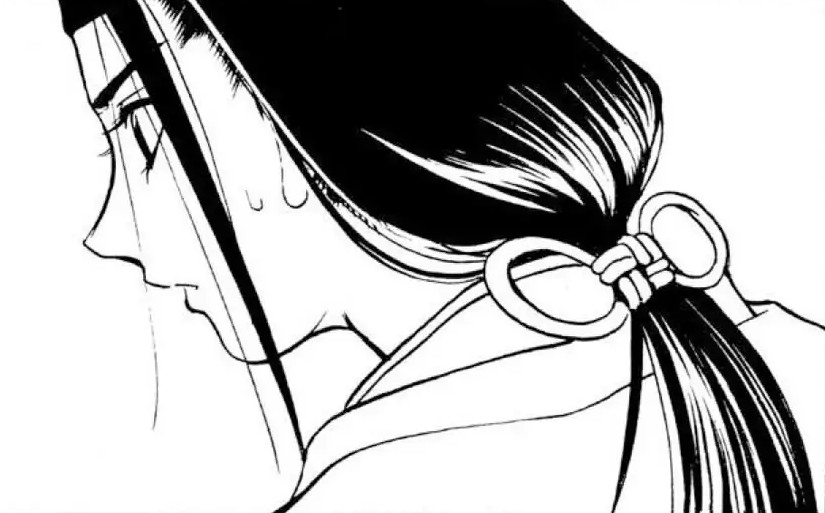
Additionally, Sai’s hat (called a tate-eboshi) sticks out a bit at the back. We can also see that most of his hair pulls back above the ear, in such a way that seems to suggest that under the hat, it’s actually tied up above his head before hanging back down again. This is… eh… marginally more historically accurate than his later look, but not by much, lol. (I’ll go into more detail on this later on another page, but TL;DR Sai’s hair isn’t anachronistic, per se, but by Heian standards it’s very much a women’s hairstyle.) - Women in the Heian period: During the Heian flashback, two women can be seen when Sai’s teaching the Emperor. I’m not sure who they’re supposed to be. I’ve heard that in the Heian period, noble women tried to avoid having their faces seen by men who weren’t immediate family members, by either receiving male guests from behind a screen (if at home) or covering their faces with a fan or their sleeve (if they’re out and about). However, I’m not sure how true this is, so I’ll see if I can find it mentioned in any academic sources before we get to the chapter that goes more into detail on women and go.
- The other go teacher: Did you know that guy actually has a name? It’s true! Although it’s not stated directly in the text, his name is Sugawara no Akitada, as confirmed by Gorgeous Characters Guide. This name is also used for him in the video game Heian Gensou Ibunroku, which released just a month after the guidebook, so I wonder which came first? Did the devs at Konami ask Hotta what his name is, or did they make one up and then she decided to make it canon? Mysterious…
- Torajiro’s death: It is true that the real historical figure Honinbou Shuusaku died of an illness at 33. However, that disease was cholera. (There was an epidemic going through Japan at the time, and when it hit the Honinbou school, Shuusaku helped to treat patients before contracting it himself). Coughing/puking up blood is not actually a symptom of cholera, as cholera is a disease of the digestive system, not the respiratory system. I, uh… I presume the reason this was changed is because the reality of cholera is kinda grisly for a series like this… Basically, it’s a disease where you get endless horrible diarrhea until you shit yourself into dehydration and die. This is deeply fucked up and, unfortunately, still a real problem in places with poor water infrastructure. But yeah, that’s how Shuusaku died in real life.
- Hikaru’s nausea: I feel like after a while they kinda dropped the idea of Hikaru being physically affected by Sai’s moods, lol. What’s up with that?
- Top pros: It’s interesting to see the names Shirakawa-sensei brings up when discussing strong pros, since this is the first mention of these characters. Most intriguing of all is Kurata, who doesn’t make his actual debut until chapter 104, and doesn’t become a particularly important character until the final arc. Talk about continuity! He’s also mentioned to be a 4-dan, meaning in the time between chapter 1 and chapter 104, he advances two ranks. This is definitely in line with his reputation as a fast rising young upstart.
Chapter 2: From a Level Beyond
Recap
In the lobby of the community center where Shirakawa-sensei’s class is held, Hikaru buys himself a soda from a vending machine. Sai, who has never seen either of these things before, is fascinated, and enjoys himself checking out this strange device that dispenses cups full of mysterious orange liquid. Hikaru buys another soda to entertain Sai. The woman who Hikaru talked to at the end of the previous chapter arrives, and comments that Hikaru shouldn’t be drinking that much soda, since it’s bad for him, and that her grandson also drinks too much soda. Hikaru dismisses this comment.
Meanwhile, Sai has already become distracted by another marvel of the modern era: a “small box in which people are playing go”, or as it’s more commonly known, the TV in the corner. Here we see Touya Meijin playing in the Tengen tournament. The lady remarks that she’s a big fan of Touya-sensei, and that rumor has it he’s the person who’s currently closest to playing the Divine Move. Sai, of course, is dazzled by the mention of someone else seeking the Divine Move, and is entranced by the match. He comments that Touya’s skills are beyond a Meijin level, and that there were few people who played at this level in the Edo period. Hikaru says that this is boring, and starts to leave, despite Sai’s protests.
As Hikaru starts to leave, Mr. Akota walks in. Hikaru remembers he’s supposed to apologize to him, but before he can say anything, he’s taken aback by Akota’s incredibly distracting new toupee and ends up accidentally spitting out his soda directly in Akota’s face. Hikaru keeps laughing, to which Akota grumbles that Kids These Days™ have no manners, and tries to wipe the soda off his head. Unfortunately, he ends up knocking off his toupee, and runs out in shame. Hikaru calls out that he’s looking forward to seeing Mr. Akota’s next toupee.
The lady says Hikaru was a little harsh, though she seems to be laughing as well. The recently arrived Shirakawa-sensei, however, is less amused, and tells Hikaru he’s suspended from class for today, though Hikaru says he didn’t do it on purpose. Sai is devastated and starts crying, proclaiming that it’s all Hikaru’s fault; Hikaru reiterates that it wasn’t on purpose, but this is of little consolation to Sai, who just keeps crying. Hikaru tells him to calm down and promises to think of a solution. He asks the lady if there’s anywhere else in the area to play go, and she responds that there’s a go salon in front of the train station, but that he’s not yet strong enough to play there. Nonetheless, Hikaru says they’ll go, to Sai’s delight.
Hikaru wonders what it’ll be like to finally watch Sai play, as they arrive at the Touya go salon. Hikaru is surprised to see nothing but old men, and since he’s never been to a go salon before, he asks Ishikawa-san if anyone can play. Ishikawa answers, and asks how strong a player Hikaru is; Hikaru says he’s not sure, since he’s never played against anyone else before, but that he “thinks he’s pretty good”, to Ishikawa’s amusement.
Immediately Hikaru spots Akira, and seeing as Akira is the only child in the entire establishment, Hikaru wants to play him. Akira seems equally happy to see someone his own age. Ishikawa tries to discourage them, awkwardly trying to explain the absurd difference in strength, but can’t get a word in as they both introduce themselves to each other. Ishikawa points out that Hikaru hasn’t paid yet (something Hikaru apparently didn’t know he needed to do), but Akira persuades her to let Hikaru in for free, since it’s his first visit. This is hardly difficult, since Ishikawa of course thinks Akira is the cutest most precious lil baby boy on planet earth and will go along with anything he says.
As they sit down, Akira asks Hikaru how strong he is. Again, Hikaru responds that he doesn’t know, but thinks he’s pretty strong. Akira suggests a 4 or 5 stone handicap to start with, but Hikaru says he doesn’t need a handicap, since they’re the same age. The nearby patrons are amused at this, and Akira confused, but nonetheless Akira agrees, though he does insist on Hikaru playing black.
Sai makes his first move, and Akira surmises from Hikaru’s thumb-and-forefinger grip on the stones that he must be a beginner. As the game goes on, however, Akira realizes that “Hikaru’s” level of play is fairly strong; at the same time, though, he notes that he uses a lot of outdated joseki, and that it’s odd how Hikaru’s hand keeps hovering over the board awkwardly. He slowly begins to realize that “Hikaru” has been in control of the entire game, and leading him along.
Suddenly, Hikaru plays an odd move, one Akira immediately realizes isn’t the best possible move- or even a particularly good one, for that matter. No, this is a move played purely to see what Akira will do in response. Sai is, as Akira realizes, testing him from a level far beyond Akira’s own.
Meanwhile, Mr. Hirose walks in, and asks if “Akira-sensei” is available for a teaching game. Ishikawa says that Akira is playing a boy his age, and that he doesn’t like being called “sensei”, though Mr. Hirose insists it’s the right thing to do based on how much Akira teaches him. He brings up that Akira still hasn’t taken the pro test, and Ichikawa responds that Akira says he wants to wait until he’s stronger to take the test, even though he’s already plenty strong enough to pass. Mr. Hirose remarks that Touya Meijin must be getting impatient.
Hikaru walks by on his way to leave. He comments that maybe it’s too early for him to be playing against other people, given how long it takes to make a move. Ishikawa gives him a flyer for the National Children’s Go Tournament in January, and suggests he go if he’s interested. Hikaru leaves, and Mr. Hirose says it’s far too early for him to try taking on Akira.
A commotion arises at the back of the salon as word gets out that Akira lost by two points (excluding komi). The other patrons loudly discuss various factors, such as Hikaru’s amateurish grip on the stones, the lack of handicap, Akira’s skill level, komi, etc., as Akira stares at the board in shock. He feels that the difference is far beyond that of just two points. Ishikawa, in disbelief, blurts out that Hikaru said he’s never played before. This is news to Akira, who is appropriately stunned.
Commentary
Hoooooo boy. This chapter. Oh man…

Well, in any case. Chapter 2 sets up the two main rivalries of the series: Sai and the Meijin, and of course, the much more emotionally intense rivalry between their respective kids.
In hindsight, it’s hard to read this chapter and not just feel so, so bad for Akira. Look at Akira the first time he meets Hikaru! He’s so bright-eyed, so polite, so full of smiles and genuine excitement to play someone his own age. Little does he know what’s coming.
I mean, think about it. Akira has spent his whole life around high level professional go players, and his whole life studying to join them. He knows exactly how hard go is, and how long it takes to get to a certain level even as someone with innate talent for the game. And he’s just a baby! To suddenly be completely utterly fucking trounced by some other kid he’s never heard of, who doesn’t even know how to hold his stones correctly, with no explanation or warning… And to then hear that this is his opponent’s first time playing go? What the fuck? No wonder he went so off the rails after this. Poor kid.
On the other hand, it was kind of a necessary step for Akira’s development, both as a player and a person. Let’s look back at the conversation between Ichikawa and Hirose. Yes, Akira very much is strong enough to go pro and everyone expected him to have done so by now, but he hasn’t. He says he’s not strong enough, but clearly it’s not actual skill that’s an issue, so what is it? Why isn’t he pursuing the pro test with the same ferocity we see from other players, later on in the pro test arc? Well, because he just… doesn’t have motivation. It’s not that big a deal to him, there’s nothing he would really get out of it. Sai completely obliterating Akira (something Sai himself feels conflicted about, as we learn later) is what kick starts Akira’s drive to improve as a player, and to fully pursue the professional world.
Regarding the game itself, Cho Yeonwoo 2-dan has a video going over Sai and Akira’s game in this chapter, with her own analysis as well as that of good ol’ AlphaGo. Definitely an interesting watch!
Two last notes:
- It’s interesting that Sai says Touya-sensei’s play is “beyond that of a Meijin level”. According to Sensei’s Library, Sai would have first encountered the Meijin title during his time with Torajiro; back then, the Meijin was by definition the agreed-upon strongest player in the country. There was also a just-then-recently-defunct position known as Meijin Godokoro, the official go tutor to the shogun (similar to Sai’s own position when he was alive), and the last person to hold this title was Honinbou Jowa, whose own student Honinbou Shuwa would later become teacher to Shuusaku. So basically, within just a few moves Sai determined that Touya Kouyou is way stronger than the literal strongest players in Japan during the Edo period. (Which also makes it odd that he says there were “few” who played at this level during the Edo period, because by definition there would have been… none? Except Sai himself, of course.)
- The scene with Sai and the vending machine is so cute! (Although why is Hikaru spending that much money on soda if he just got his allowance cut off?) For many years it was a goal of mine to take photos with a vending machine while cosplaying Sai, and I finally achieved this back in 2017. As you can see the choice of materials for this cosplay is pretty bad, lol, so I’d like to remake it someday… someday when I have a lot more money…
